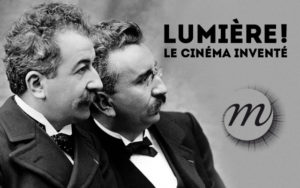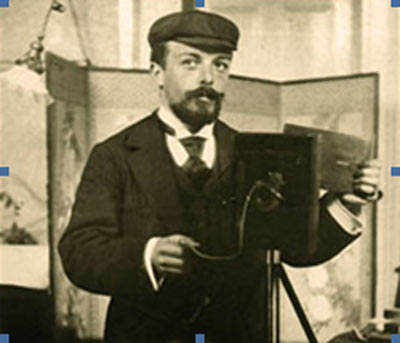 CINEMATOGRAPHY: FIRST MOVIE FILMED IN CUBA.
CINEMATOGRAPHY: FIRST MOVIE FILMED IN CUBA.
After the success obtained by the presentation of the Cinematographer in Paris, the Lumiere brothers began to plot expansion strategies for their latest invention. And, although it seems incredible, Cuba was on that list.
In Havana, before the arrival of the Lumiere dealer, they had been making presentations ranging from the most primitive to the most advanced of the emerging film art; a show almost identical to the French, named Kinetoscope, invented by Edison and that, even with some initial success, could not make shadows the Frenchman, who was about to arrive. The stalls were carried out in improvised barracks that proliferated around the central park and the old Tacón theater, now the Gran Teatro de la Habana.
But Gabriel Veyré, the French citizen who brought the Lumiere cinematography to Cuba, arrived in Havana on January 15, 1897, rented a place, acquired a few dozen chairs, performed the pertinent works to achieve a certain darkness in the room, and On the 23rd he gave a show of his show to the authorities and the press.
The functions for the public would be carried out in half-hour batches from 6 and 30 until 11 and 30 at night, the entrance cost 50 cents for seniors and twenty for children and military without graduation. The most popular short films were the primitive films with which the Lumiere cinematographer debuted in Paris: “The Irrigated Sprinkler”, “The Card Game”, “The Departure of the Train” and above all “The Comic Hat”; in addition to a first film, entitled “Bathers”, and that did not last much longer than two minutes. To please the Spanish authorities, Veyré added a couple of tapes filmed in Spain: “Spanish Infantry in Bivouac” and “Spanish Artillery in combat”.
The day of the debut, in its ten batches, about a thousand Havanans passed through the hall. About 400 pesos were collected.
On March 16 of the same year, when the French businessman had already achieved some 20 thousand pesos of profits, the Lumiere cinema had to be closed because of a small fire that destroyed part of the furniture.
It might seem somewhat mystical but, before this setback, the Frenchman Veyré had filmed what would be the first film of the Cuban cinema “Simulacrum de Incendio”, one minute long. That tape had been included in the exhibition program, not a few were those who came to see themselves or an acquaintance who intervened in that simulation of a fire to be made by firefighters from the barracks near the cinema. The film was taken on February 7, 1897, which is considered the initial date of the film industry in Cuba.
The film in question presented the firefighters on duty removing the pump from the barracks, the reel and the aid cart; firefighters also appear climbing a roof and carrying hoses. It was exhibited to the public a few days later and reappeared six years later in 1903.
 CINEMATOGRAFÍA: PRIMERA PELÍCULA FILMADA EN CUBA.
CINEMATOGRAFÍA: PRIMERA PELÍCULA FILMADA EN CUBA.
Tras el éxito obtenido por la presentación del Cinematógrafo en París, los hermanos Lumiere comenzaron a trazar estrategias de expansión de su novísimo invento. Y, aunque parezca increíble Cuba estuvo en esa lista.
En La Habana, antes de la llegada del concesionario de los Lumiere, se habían estado realizando presentaciones que iban desde lo más primitivo hasta lo más avanzado del naciente arte cinematográfico; un espectáculo casi idéntico al francés, nombrado Kinetoscope, inventado por Edison y que, aun con cierto éxito inicial, no pudo hacer sombras al francés, que estaba por llegar. Las puestas se llevaban a cabo en improvisados barracones que proliferaban por los alrededores del parque central y el antiguo teatro Tacón, hoy Gran Teatro de la Habana.
Pero Gabriel Veyré, el ciudadano francés que trajo el cinematógrafo Lumiere a Cuba llegó a La Habana el 15 de enero de 1897, alquiló un local, adquirió unas cuantas docenas de sillas, realizó las obras pertinentes para lograr cierta velada oscuridad en la sala, y el día 23 dio una muestra de su espectáculo a las autoridades y a la prensa.
Las funciones para el público se llevarían a cabo en tandas de media hora desde las 6 y 30 hasta las 11 y 30 de la noche, la entrada costaba 50 centavos para los mayores y veinte para los niños y militares sin graduación. Los cortos de mayor popularidad resultaron las primitivas películas con las que debutó en París el cinematógrafo de los Lumiere: “El regador regado”, “La partida de Naipes”, “La salida del tren” y sobre todo “El sombrero cómico”; además de una primera película, titulada “Bañistas”, y que no duraba mucho más de dos minutos. Para agradar a las autoridades españolas, Veyré adicionó un par de cintas filmadas en España: “Infantería española en vivac” y “Artillería española en combate”.
El día del debut, en sus diez tandas pasó por la sala cerca de un millar de habaneros. Se recaudaron unos 400 pesos.
El 16 de marzo del propio año, cuando el negociante francés ya había logrado unos 20 mil pesos de ganancias, hubo de cerrarse el cinematógrafo Lumiere a causa de un pequeño incendio que destruyó parte del mobiliario.
Podría parecer algo místico pero, con anterioridad a este contratiempo, el francés Veyré había filmado lo que sería la primera película del cine cubano “Simulacro de Incendio”, de un minuto de duración. Aquella cinta había sido incluida en el programa de exhibición, no pocos fueron los que acudieron a verse a sí mismos o algún conocido que interviniera en aquel simulacro de un incendio que realizaran los bomberos del cuartel aledaño al cine. La película fue tomada el 7 de febrero de 1897, lo que se considera como la fecha inicial de la industria cinematográfica en Cuba.
La película en cuestión presentaba a los bomberos de guardia sacando la bomba del cuartel, el carretel y el carro de auxilio; también aparecen bomberos subiendo a una azotea y portando mangueras. Fue exhibida al público pocos días después volviendo a presentarse seis años más tarde en 1903.
Agencies/Radio Encyclop./ CiberCuba/ Internet Photos/ Arnoldo Varona/ TheCubanhistory.com
THE CUBAN HISTORY, HOLLYWOOD.







